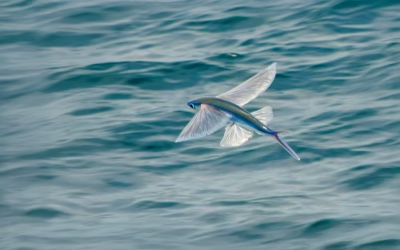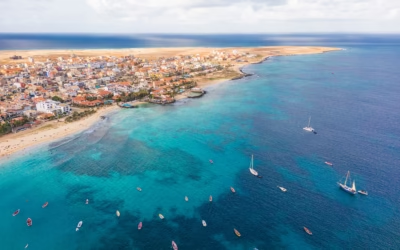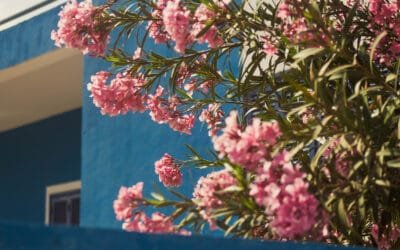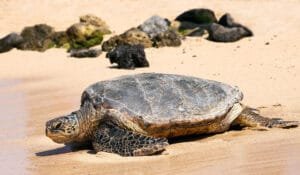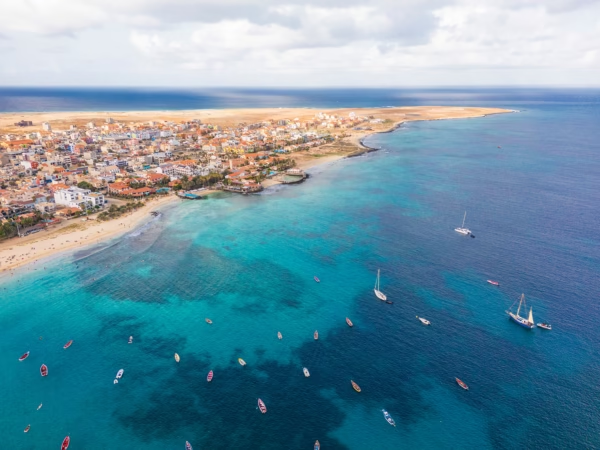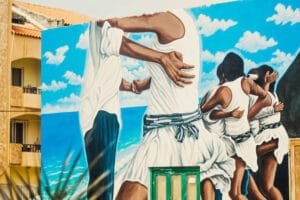Birds of Cabo Verde: The Most Popular Species

Cabo Verde is an ornithologists’ paradise. It is a fantastic place for birdwatching. There are many bird species here, both native only to the islands of the archipelago (and nowhere else) and many typically African and migratory species. Below is a list of over 20 types of birds observed on Sal and the other islands.
How many of them have you seen?
Birds of Cabo Verde
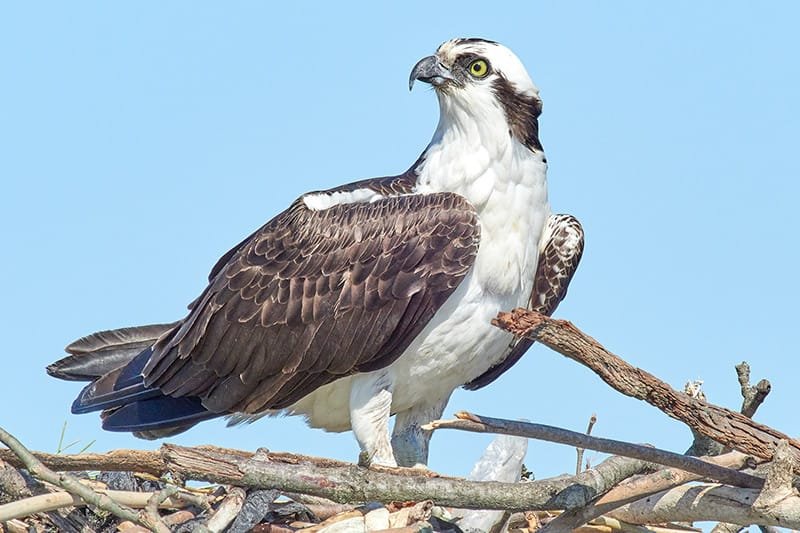
Osprey or the "Fish Hawk" (Pandion haliaetus)
Ospreys are large, diurnal birds of prey, reaching over 60 cm in size and having a wingspan of 180 cm. They tolerate various habitats, nesting near water, which provides an adequate food supply. As their common name (fish hawk) suggests, ospreys’ diet consists almost exclusively of fish. They are found on all continents except Antarctica.
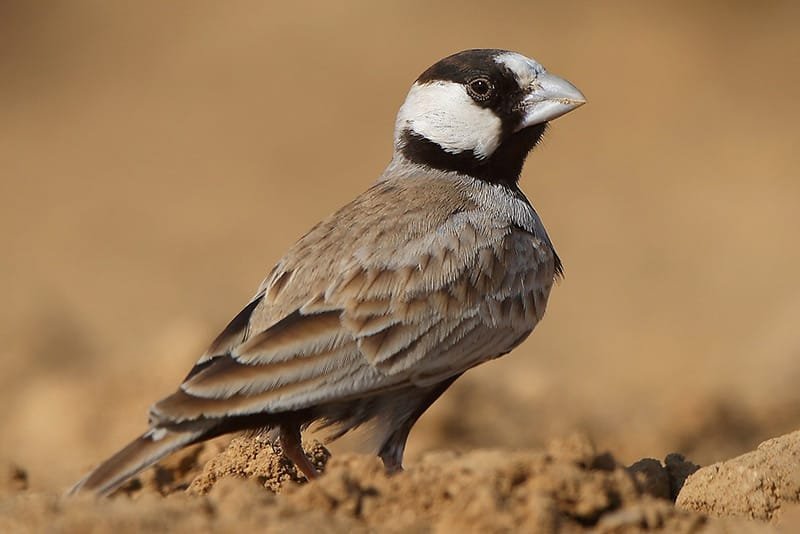
Black-Crowned Sparrow-Lark (Eremopterix nigriceps)
It’s a small, finchlike lark of arid zones with strong sexual dimorphism. The male is striking with black underparts, whitish cheeks, and a black crown. The female is overall grey-brown overall and lightly streaked. When flying, it shows dark underwing coverts and a black tail (from above black tail sides). It breeds on desert plains with scattered bushes.
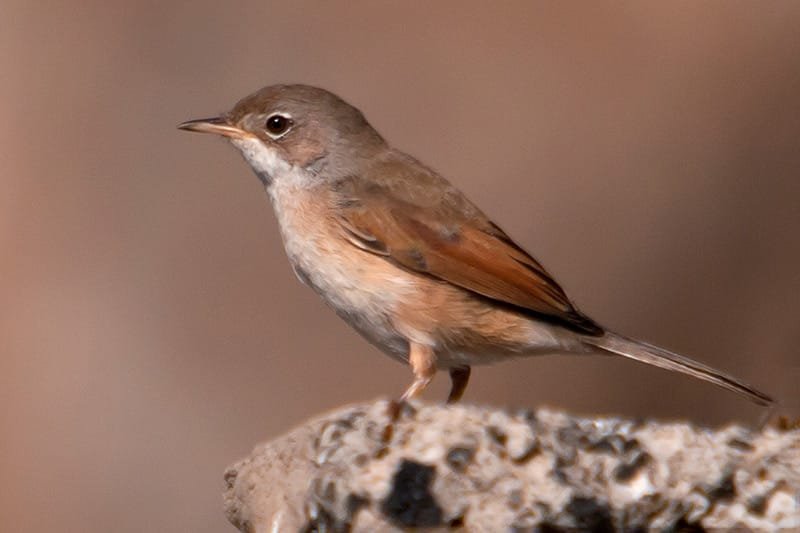
Spectacled Warbler (Sylvia conspicillata orbitalis)
Spectacled Warblers have mouse-brown bodies with uniform rufous wing panels, dull pinkish chests, white throats, white outer tail feathers, and orange-brown legs. Males have grey heads while females have it brown-grey. They both show their white eye-ring well.
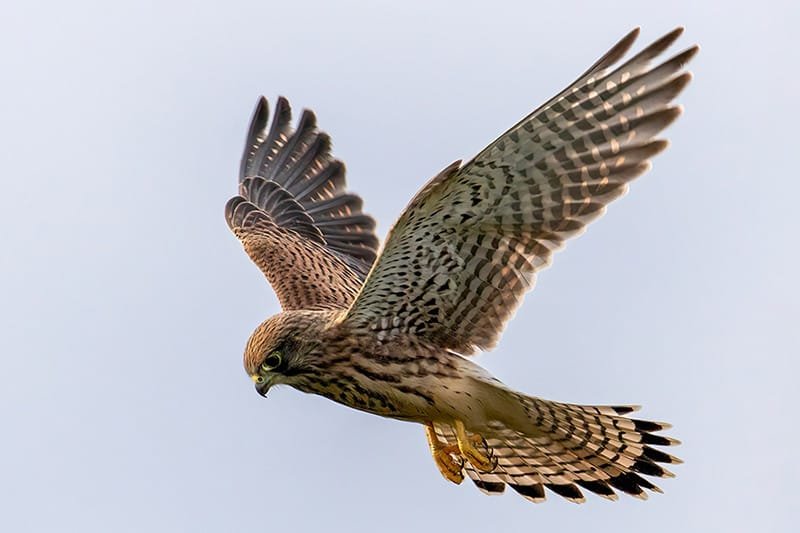
Greater Cape Verde Kestrel (Falco alexandri)
These birds belong to the kestrel group of the falcon family. Their plumage is mainly light chestnut brown with blackish spots on the upperside and buff with narrow blackish streaks on the underside; the remiges are also blackish. Unlike most raptors, they display sexual colour dimorphism, with the male having fewer black spots and a blue-grey cap and tail.
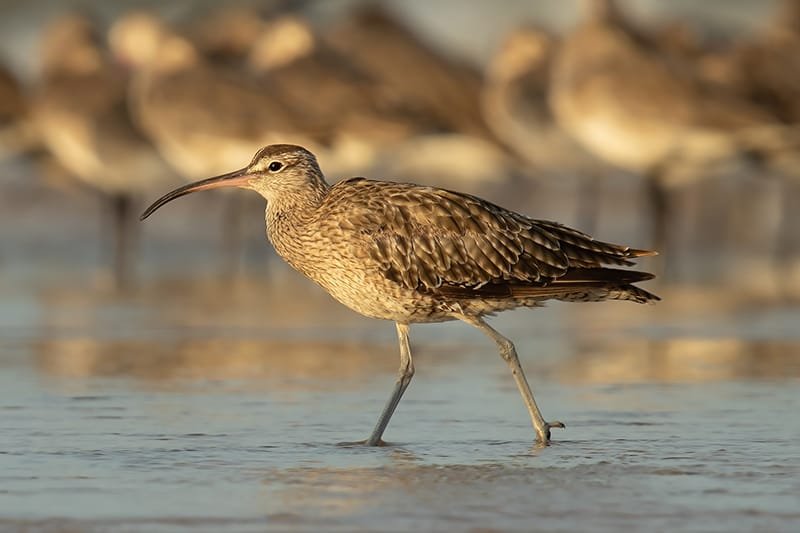
Whimbrel (Numenius phaeopus)
Whimbrels are wader birds in the large family Scolopacidae. They are one of the most widespread of the curlews, breeding across much of subarctic North America, Europe and Asia as far south as Scotland. Whimbrels occur in small densities along coasts throughout the Cabo Verdean archipelago, both on sandy and rocky shores.
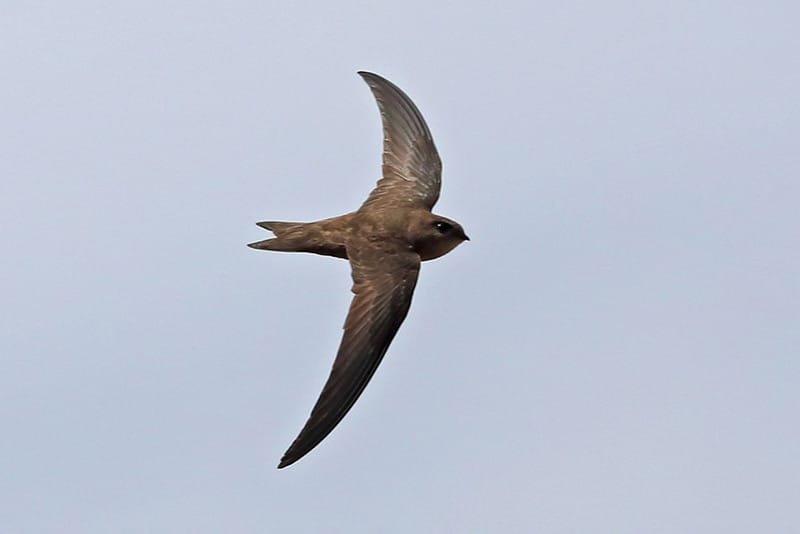
Cape Verde Swift (Apus alexandri)
Cape Verde swifts or Alexander’s swifts (Apus alexandri) are small bird of the swift family found only in the Cape Verde Islands. They have been recorded from all the islands except Santa Luzia, although they probably breed only on Santiago, Fogo, Brava, Santo Antão and São Nicolau. They are generally common and have a stable population.
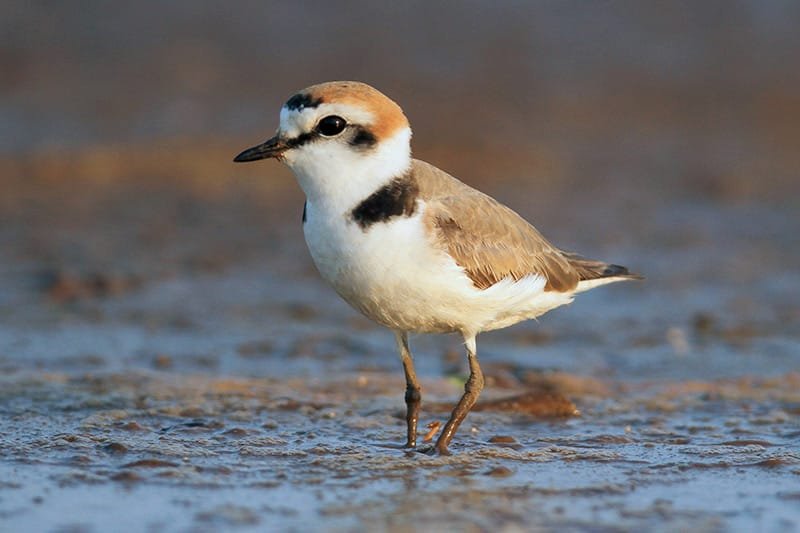
Kentish Plover (Charadrius alexandrinus)
Kentish plovers inhabit North Africa, both on the mainland, such as Senegal, and on the islands, including the Cape Verde archipelago. They are small cosmopolitan shorebirds that breeds on the shores of saline lakes, lagoons, and coasts. Both male and female birds have pale plumages with a white underside, grey/brown back, dark legs and a dark bill.
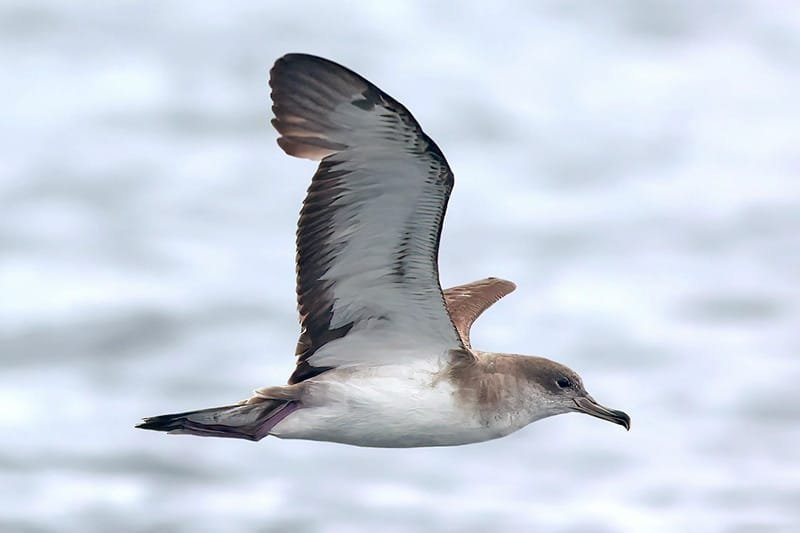
Cape Verde Shearwater (Calonectris edwardsii)
Cape Verde shearwaters are locally known as “cagarra”. They are medium-large shearwaters, seabirds in the petrel family Procellariidae. These birds are endemic to the Cape Verde archipelago of Macaronesia in the Atlantic Ocean, off the coast of West Africa. Shearwaters have slim, dark bills, with head and upper parts darker than its similar subspecies, Cory’s shearwater.
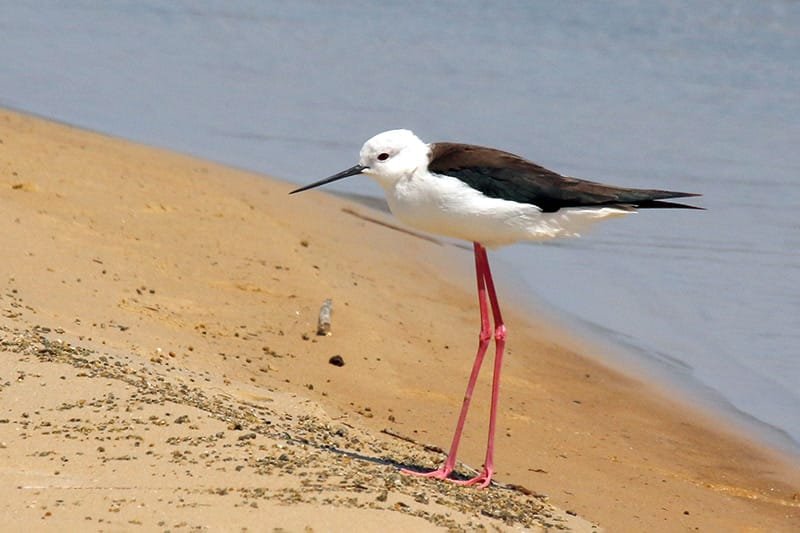
Black-Winged Stilt (Himantopus himantopus)
Black-winged stilts are a widely distributed long-legged waders in the avocet and stilt family. Adults reach a length of 33–36 cm. These birds have long, pink legs, a long, thin black bill, and are blackish above and white below, with a white head and neck featuring varying amounts of black. Males have a black back. Females’ backs have a brown hue, contrasting with the black remiges.
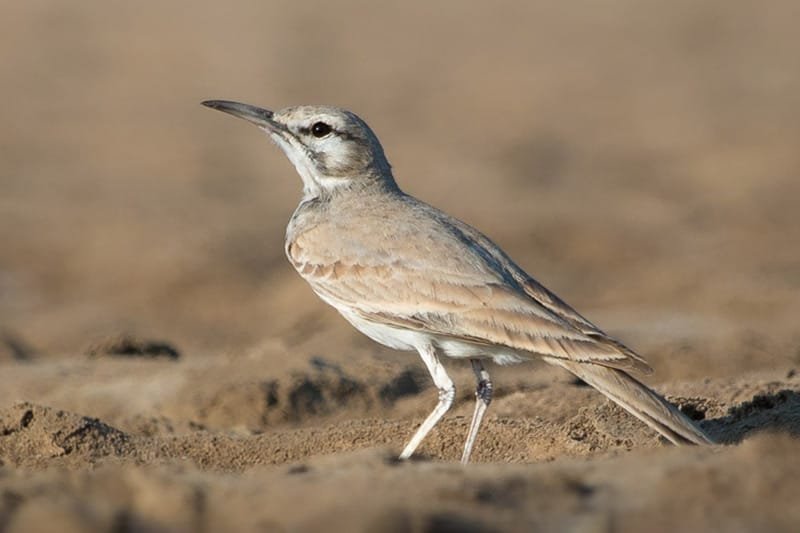
Greater Hoopoe Lark (Alaemon alaudipes)
It’s a large desert lark. On the ground, plumage is unimpressive, with a spotted belly and overall sandy tones. In flight, it exposes a magnificent white-and-black pattern. Males are slightly brighter than females. Constantly runs on its long legs. Its song is a beautiful ascending series of flutey whistles followed by a descending trill.
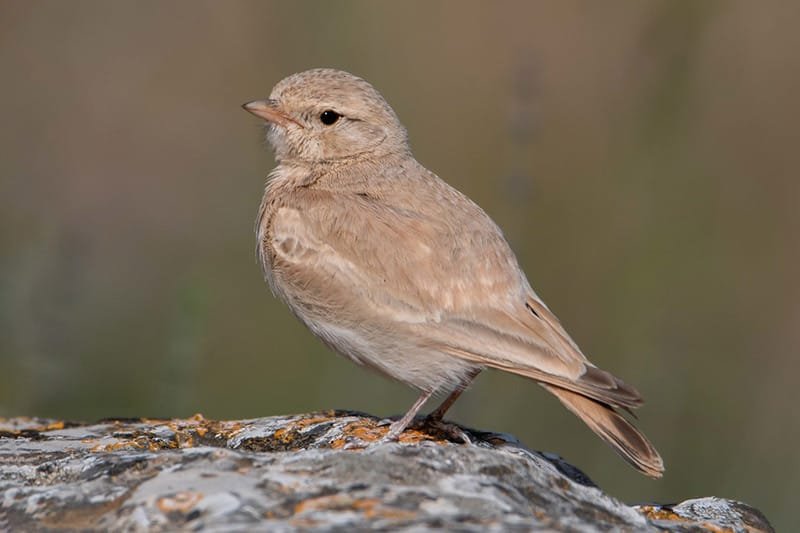
Bar-Tailed Lark (Ammomanes cinctura cinctura)
Its natural habitat is hot deserts. It inhabits North Africa, the Arabian Peninsula, the Middle East, and Western Asia. It measures around 15cm. It has a domed head, thin legs and a short tail. The upper parts are sandy-buff. The underparts are whitish, and the breast and flanks are washed with buff. The rufous wings have dark trailing edges, and the tail has a terminal black band.
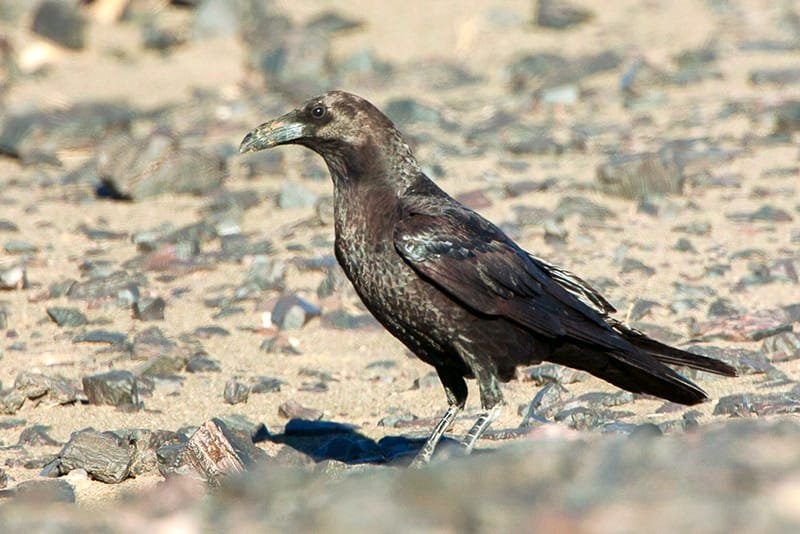
Brown-Necked Raven (Corvus ruficollis)
It’s a large, black raven. Its namesake brown neck is visible only from close, in specific lighting. Compared to a common raven, the brown-necked raven has a slightly thinner bill and shorter tail, and its call is less deep and throaty. It lives exclusively in arid zones and breeds on cliffs and trees. Moves around in pairs or small groups but may congregate in larger groups at abundant food sources.
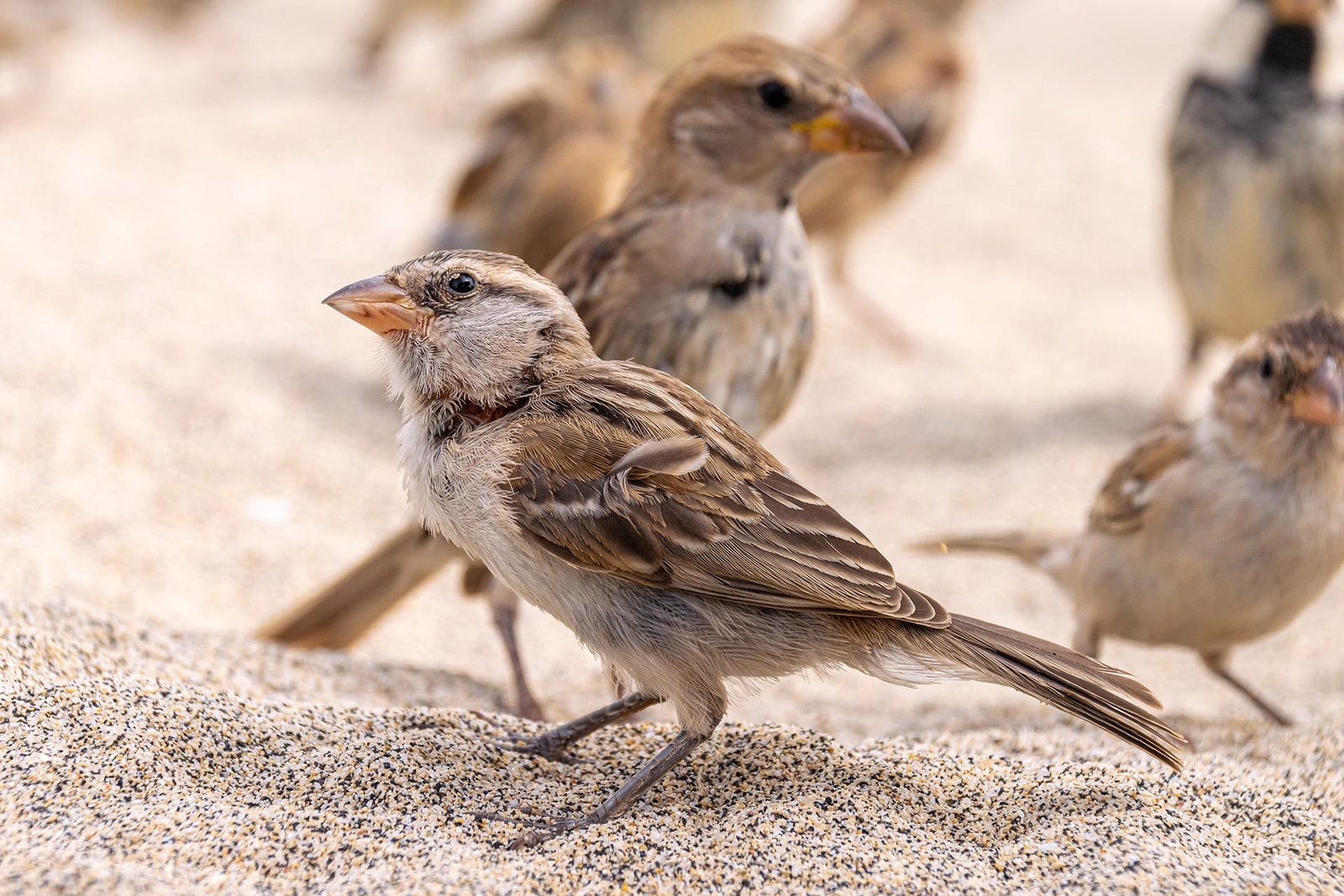
Iago / Cape Verdean Sparrow (Passer iagoensis)
It’s a small bird. It’s 12–13 centimetres long, with a wing length of around 6 centimetres. Its plumage is similar to that of the house sparrow and is similarly sexually dimorphic, which means that the appearance of males and females differs.
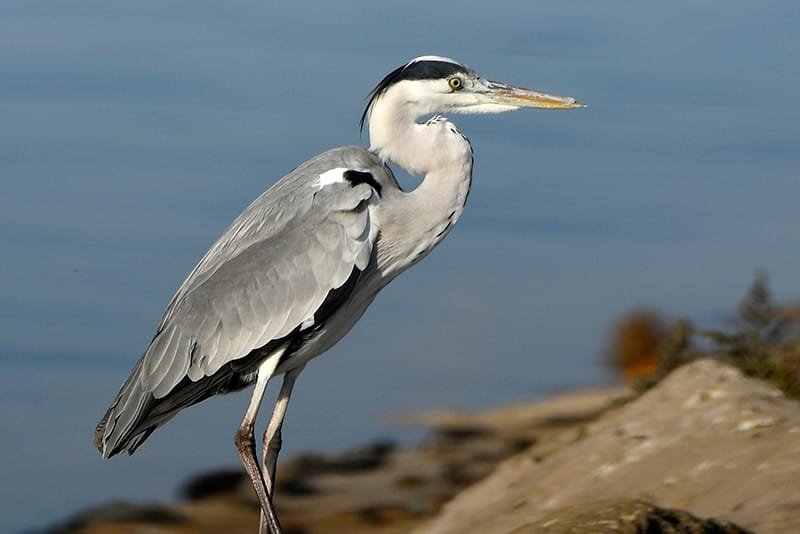
Grey Heron (Ardea cinerea)
It’s conspicuous in wetland habitats, such as marshes, small ponds, ditches, and wet fields. It nests colonially in tall trees. They are seen alone or in small groups, standing quietly near the water or on grass fields. Its plumage is grey with a paler neck. The adult has a white crown, black eyebrows and shoulder patches. Like other herons and egrets, it flies with its neck pulled in to form a bulge.
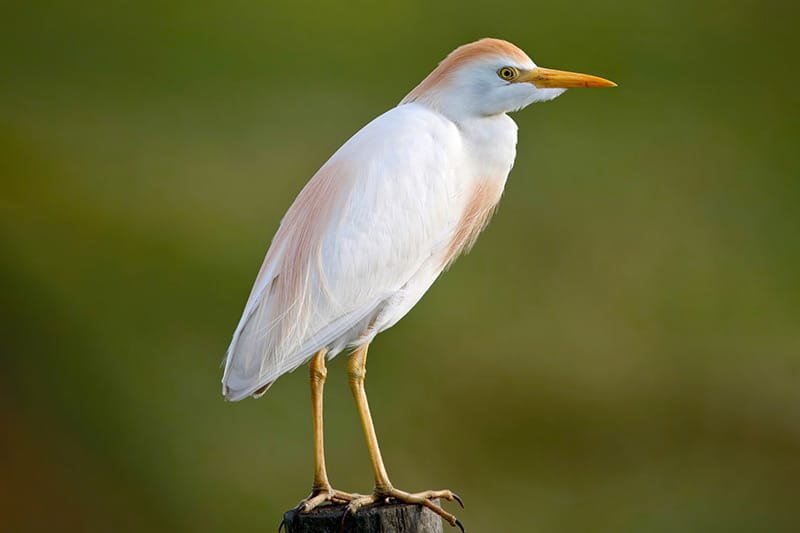
Western Cattle Egret (Bubulcus ibis)
It’s a small white heron with a short yellow bill, a relatively short, thick neck, and short legs compared with other egrets. It’s frequently seen in dry habitats and rarely gets its feet wet. Often gathers in flocks, frequently following cattle or tractors in fields. During the breeding season, its head and chest turn a pale salmon colour, its legs become reddish or yellow, and its bill becomes brighter.
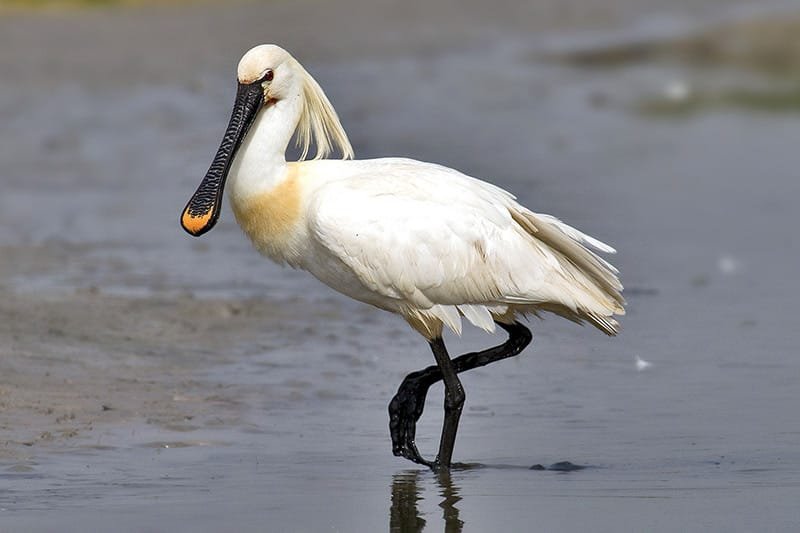
Eurasian Spoonbill (Platalea leucorodia)
It’s a distinctive, large white wading bird with a spatula-shaped bill. The adult has a short crest and a yellowish breast patch. It inhibits wetlands with shallow water (including tidal flats) and feeds by sweeping its bill side-to-side for crustaceans and small fish. It may be confused with egrets when sleeping, but it has a stockier, more thickset overall appearance.
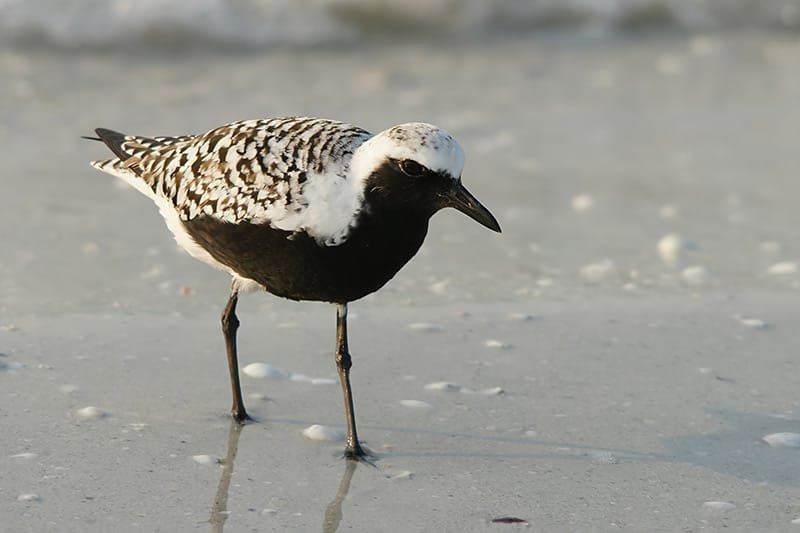
Grey Plover (Pluvialis squatarola)
It’s a chunky, medium-sized shorebird with a short, stout bill. During the breeding season, it exhibits a striking black face and a clean, white undertail. In the non-breeding season, it’s more uniformly drab grey with a whitish belly. Feeds on beaches and mudflats by walking or running, stopping, and pecking at the surface, often in flocks. It’s widespread across the globe, especially on coastlines.

Striated Heron (Butorides striata)
It’s a widespread small heron. The small size and overall grey colour distinguish it from most other herons. It has a contrasting dark cap, distinct pale edges on wing feathers, and white and rufous stripes on the front of the neck. It’s commonly solitary and often found standing quietly around wetland habitats such as marshes, agricultural fields, rivers, and lakes.
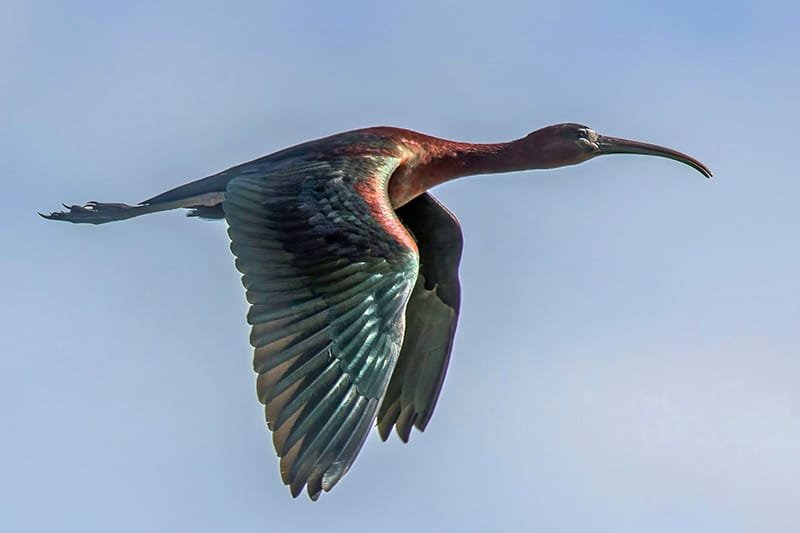
Glossy Ibis (Plegadis falcinellus)
Adults are typically dark, with iridescent green and reddish tones. They have long, curved bills, dark eyes and a thin white border surrounding their dark facial skin. They are usually gregarious, found mainly in salty marshes and shallow wetlands. Unmistakable in most of their range.

Ringed Plover (Charadrius hiaticula)
It’s a stout shorebird with orange legs. It has a bold black-and-white head and breast and bright orange, a dark-tipped bill in the breeding season, and a black bill and more subdued, browner colours at other times. It shows a bold white wing stripe in flight and makes a mellow whistled poo-ee call. It breeds on beaches and lakeshores, and winters on the coast.
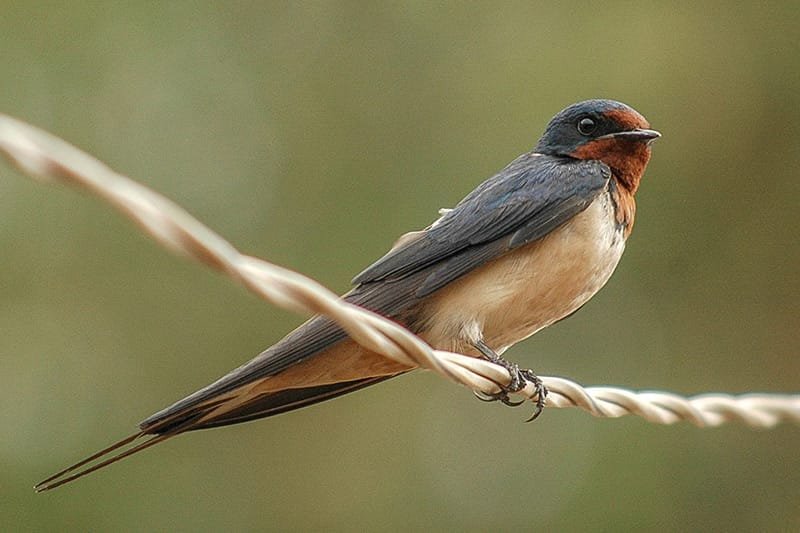
Barn Swallow (Hirundo rustica)
It’s a colourful swallow with a long, forked tail and dark rump. It has an iridescent navy blue colour with a rich orange throat and forehead, and its underparts vary from bright buffy-orange to whitish. It occurs in open habitats, especially in large fields and wetlands. It builds muddy cup nests in barns or under docks and makes a dry, scratchy svit-svit call.

Greenshank (Tringa nebularia)
It’s a gentle-eyed large wader with a slightly upturned bill, overall greyish plumage with a white belly and greenish legs. In flight, it’s dark above, with a broad white stripe up the middle of the back. It feeds mainly by striding in water, picking and sweeping with its bill. It occurs in varied wetland habitats and is a migrant and wintering bird in Africa, southern Asia and Australia.
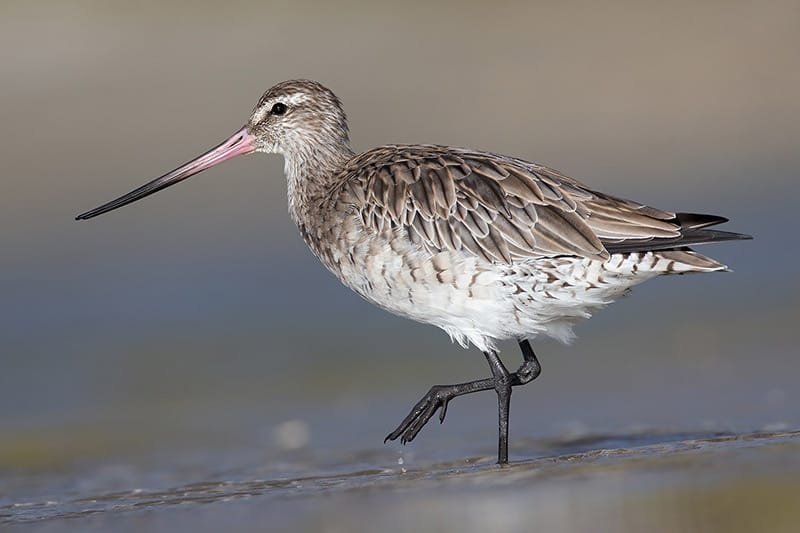
Bar-Tailed Godwit (Limosa lapponica)
It’s a gangly wader with a long bicoloured bill and dark brick-red below (male) or pale orangey (female) plumage in the breeding season, overall grey-brown with a white belly at other times. It has a white rump and a finely barred tail. It feeds by probing its long bill into the mud on mudflats and brackish coastal lagoons, and roosts in adjacent freshwater habitats, often in flocks.
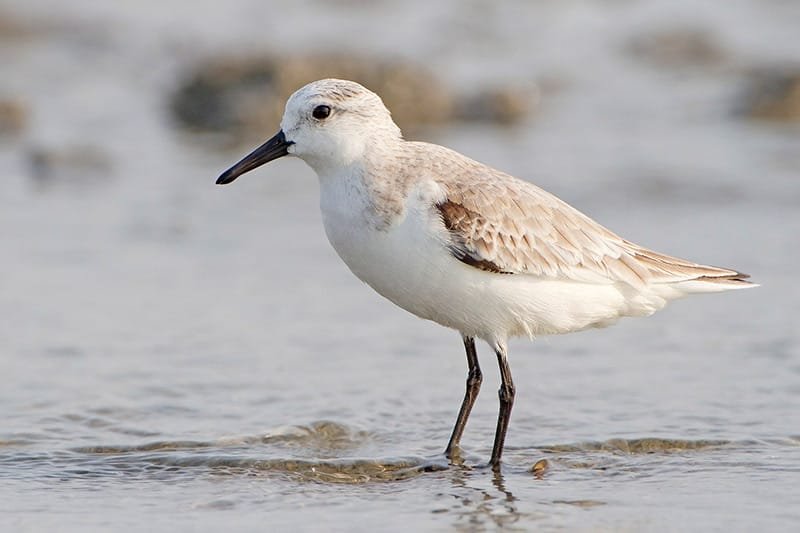
Sanderling (Calidris alba)
It’s a small, sprightly shorebird of an extensive global range, with a larger and thicker bill than other peeps or stints. Its breeding plumage shows rusty tones on the upper parts. That pattern and colour fade away to very pale in winter. Its flocks are usually seen on open beaches and mudflats, well known for running back and forth chasing waves and feeding actively in the sand.
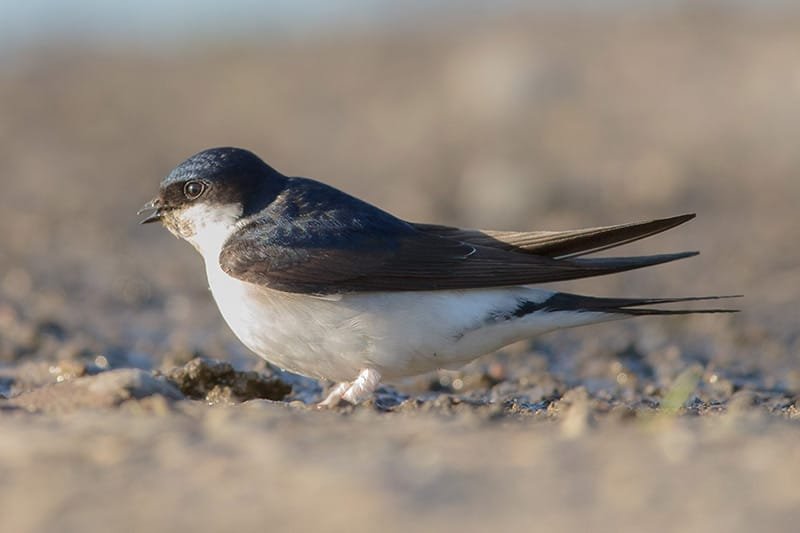
House Martin (Delichon urbicum)
It’s a distinctive small swallow with blue-black upper parts, a big white rump patch and snow-white underparts. It has a relatively shallow-forked and streamer-less tail and a jerky, fluttery flight. It breeds colonially, frequently building mud nests under the eaves of buildings and forages over varied open and semiopen habitats, especially water bodies and adjacent fields.
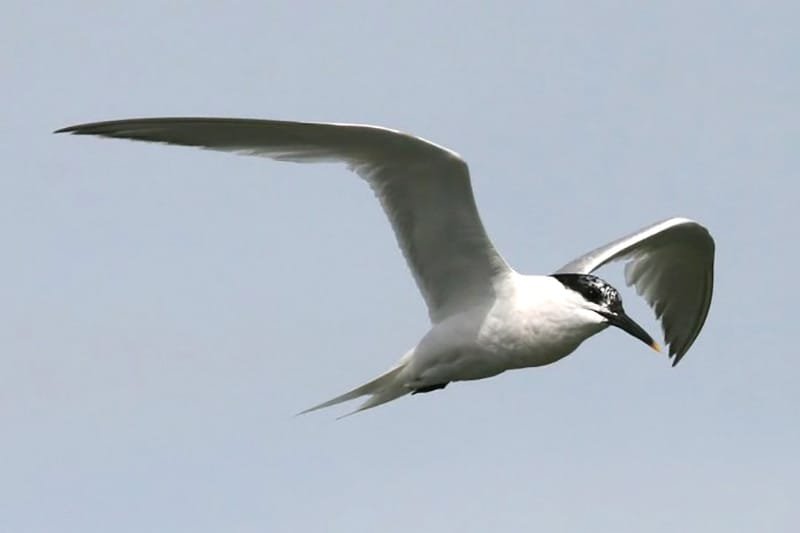
Sandwich Tern (Thalasseus sandvicensis)
It’s a pale medium-sized tern with a geographically variable bill pattern: black with a distinct yellow tip in most of its range and entirely yellow in the Caribbean and parts of South America. Shows a shaggy black cap in breeding plumage, while non-breeding birds develop white foreheads. It’s strictly coastal, most commonly found on beaches and estuaries, often mixed with other terns.
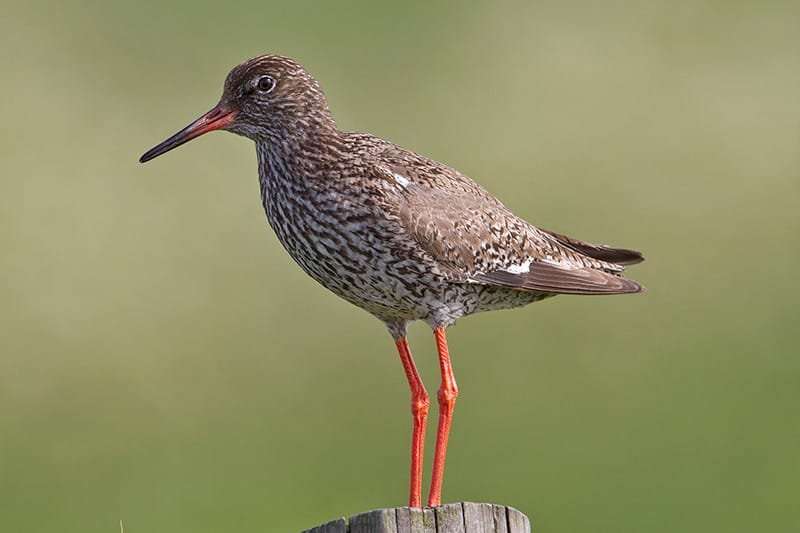
Redshank (Tringa totanus)
It’s a stocky brown wader with bright red legs. It alerts other birds with its loud, fluty, whistled calls, bobs its tail when nervous, and then flies to show the flashy white trailing edge of its wings and a white rump patch. It feeds in muddy shallows, probing and picking with its bill, inhabits fresh and coastal wetlands, and also breeds on moorland, usually near water.
Bibliography / Sources
- Small natural history museum in Buracona, Sal, Cabo Verde;
- Migrant and resident waders in the Cape Verde Islands by C.J. Hazevoet;
- Picture of the black-crowned sparrow-lark © Albin Jacob via eBird portal;
- Picture of common greenshank © Charles J. Sharp, CC BY-SA 4.0, via Wikimedia Commons;
- Pictures of bar-tailed godwit (Limosa lapponica) and Sanderling (Calidris alba) © JJ Harrison,
- Picture of house martin © Andreas Trepte, CC BY-SA 2.5, via Wikimedia Commons;
- Picture of sandwich tern © Ken Billington, CC BY-SA 3.0, via Wikimedia Commons;
- Picture of redshank © Andreas Trepte;
